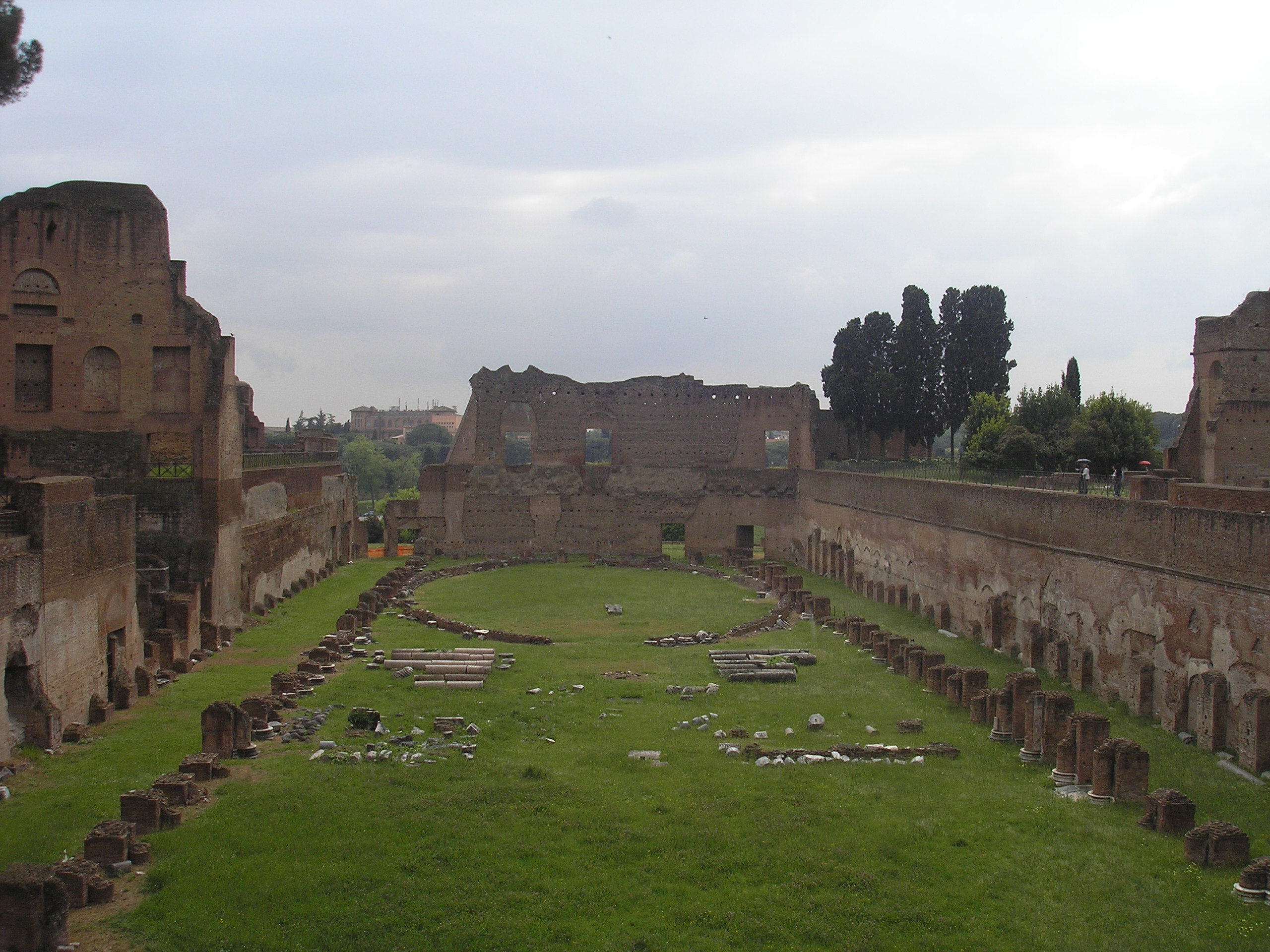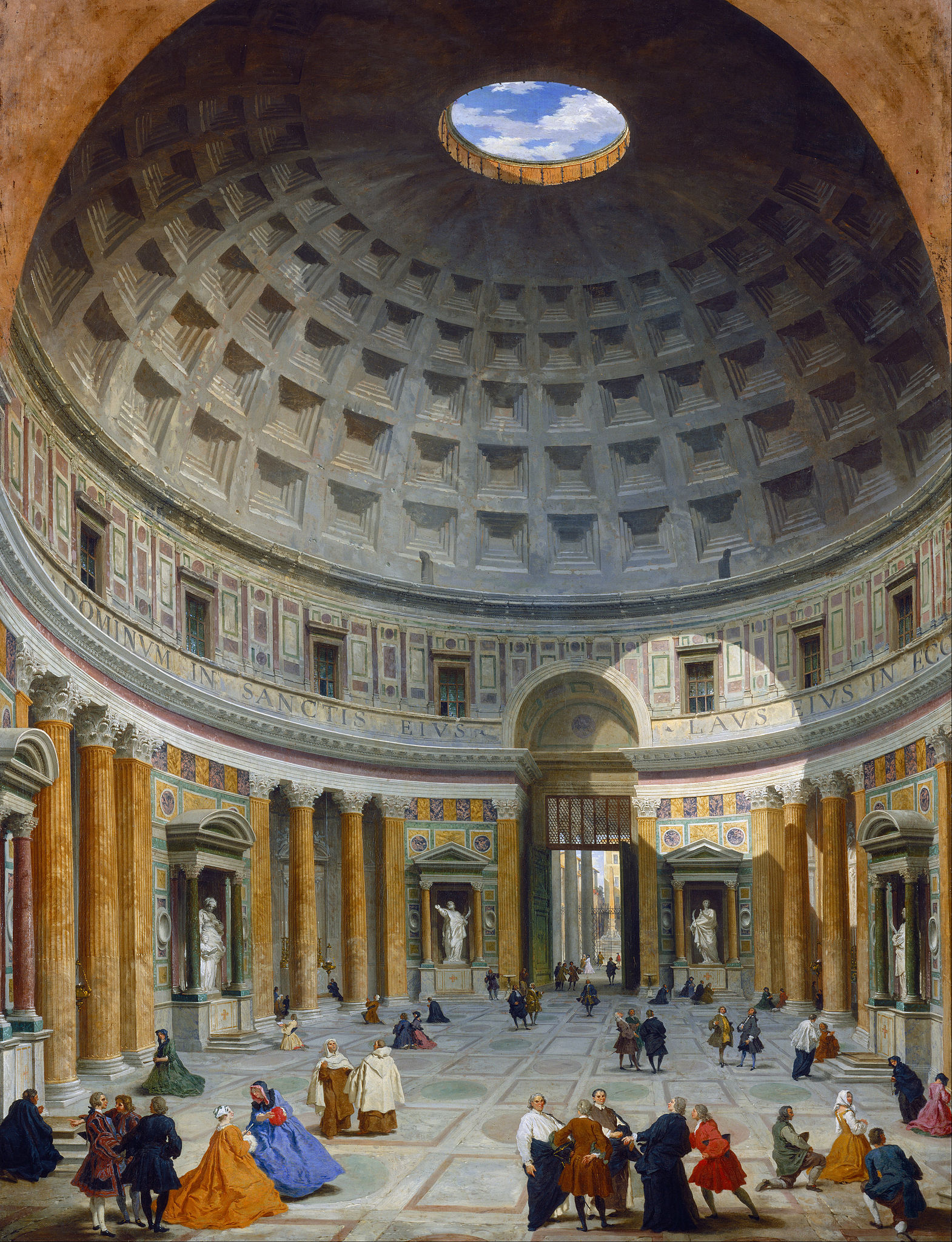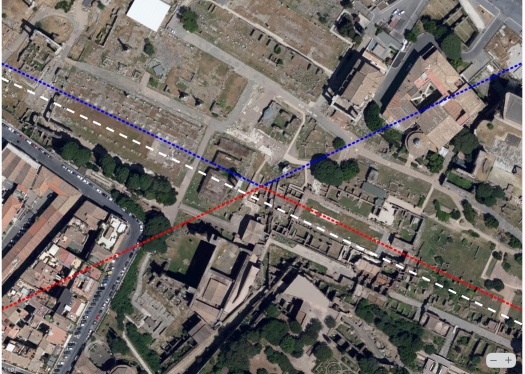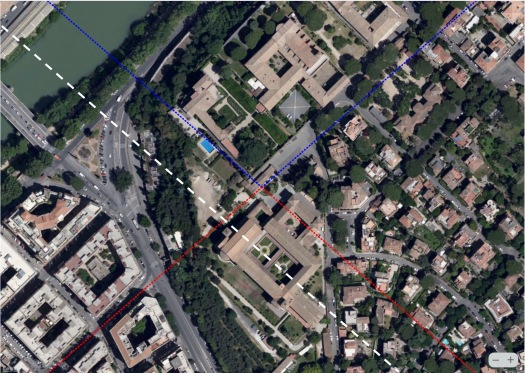Although most historical accounts are rooted in the legendary founding of Rome by Romulus and Remus in 753 BCE we present new evidence based on astronomical alignments that the place we now call Rome may have been first established tens of thousands of years earlier.
Click here to download paper from SSRN.
Introduction
Analysis of the alignment of Roman towns reveals the distribution of geographic orientations is decidedly non-random (Magli 2008). Most are laid out in solar directions from due east-west to directions north and south that are within the range of sunrise/sunset directions over the course of the year. These alignments span the range of lunar directions except for extreme northerly and southerly moonrises and moonsets at the time of major lunar standstills which occur every 18.6 years. Spiravigna (2016) has found evidence of lunar alignments at Roman sites including the Decumani of Naples, Augusta Emerita, known today as Merida, in Spain, and Curia Julia in the Forum of Rome.
Lunar Alignments
Most are familiar with the seasonal path of the sun – that it rises in the east and sets in the west, more or less. The motion of the moon, however, is more complex and perhaps, as a result, is seen as being more mysterious. The moon’s movements are more complex than the sun’s for several reasons. The moon completes one orbit around us in a much shorter time than we do around the sun and so does in a month what the sun does in a year, in terms of the changing rising and setting direction along the horizon. The plane of the moon’s orbit is tilted by 5.1° relative to the ecliptic and so can rise and set more northerly and more southerly than the sun. Due to the effects of the sun’s gravity, the moon’s orbital plane does not stay fixed in space but precesses, causing the monthly angles of moonrise and moonset to change over an 18.6-year cycle. Every 18.6 years the moon rises and sets at its maximum northerly and southerly directions, which is known as a major lunar standstill. 9.3 years later a minor lunar standstill occurs when the moon rises and sets at its minimum northerly and southerly directions. Both of these times appear to have been important to ancient builders throughout the world.

The City of Rome
According to legend, the city of Rome was founded by the sons of Mars, the twin brothers Romulus and Remus on April 21, 753 BCE. Seven hills comprise the city of Rome. Temples dedicated to the Roman goddess Luna once existed on Aventine and Palatine hills.
The alignment of grid patterns on both Aventine and Palatine hills lie in the direction of most southerly moonrises and northerly moonsets. The alignment of the Roman Senate building, Curia Julia, in the Roman Forum is in the direction of most northerly moonrises and southerly moonsets. Alignments in all three areas are in major lunar standstill directions.
The Field of Mars
West of the old city lies Campus Martius – The Field of Mars. One of the oldest Roman temples, the Pantheon, is here just east of Piazza Navona. Unlike the Roman Forum, and Palatine and Aventine hills, this part of Rome is laid out in a direction that currently has no known astronomical or geographic significance.



In a study of more than two hundred archaeological sites (Carlotto 2020a), it was discovered that the alignment of almost half of the sites examined could not be explained in terms of known directions. Approximately 80% of the sites were found to reference four locations within 30° of the North Pole (Carlotto 2019a) that, if Hapgood’s theory of earth crustal displacement is correct, could have been former locations of the North Pole over the past 100,000 years (Carlotto 2020b).

The Pantheon is one of these sites. Shifting the geographic reference point from the current North Pole to a previous pole in Hudson Bay, the Pantheon and surrounding area become aligned in the direction of major lunar standstills relative to the Hudson Bay pole. Based on the chronology established by Gaffney (2020), if the Romans had built the Pantheon over a previous structure that was aligned to a former pole in Hudson Hay, based on its alignment, the original site could have been established at least 12,000 to 18,000 years ago.
Ancient Foundations
Examples of newer structures built over older pre-existing structures can be found throughout the world. Seven stages of construction are evident at Baalbek. Under the Parthenon in Athens lies an older Parthenon (Beard 2010). There are many examples of this practice, now known as adaptive reuse, in Rome. Walking through the old city modern buildings built over and alongside ancient ruins are everywhere.

But what lies underneath Rome? According to Tom Mueller in his article “Underground Rome,” something is buried beneath everything in Rome. Roman architects tore the roofs from old buildings filled their interiors and used them as foundations for newer structures. Four levels have been excavated within San Clemente, a twelfth-century basilica just east of the Coliseum.
Descend the staircase in the sacristy and you find yourself in a rectangular hall decorated with fading frescoes and greenish marbles, lit by sparse bulbs strung up by the excavators. This is the original, fourth-century San Clemente, one of Rome’s first churches. It was condemned around A.D. 1100 and packed full of earth, Roman-style, as a platform for the present basilica. A narrow stair near the apse of this lower church leads down to the first-century structures upon which it, in turn, was built: a Roman apartment house and a small temple. The light is thinner here; cresses and fungi patch the dark brick and grow delicate halos on the walls behind the bare bulbs. Deeper still, on the fourth level, are several rooms from an enormous public building that was apparently destroyed in the Great Fire and then buried by Nero’s architects. At about a dozen yards below ground the massive tufa blocks and herringbone brickwork are slick with humidity, and everywhere is the sound of water, flowing in original Roman pipes. No one has excavated below this level, but something is there, for the tufa walls run another twenty feet or so down into the earth.[5]
The fourth-century church was filled with rubble and used as the foundation of the current basilica, whose aisle and nave were lined up with that of the one below it. In this way, the alignment of the original structure defines that of later structures built over and around it.
The Oculus
Spiravigna (2018) considers the question of what could have been seen through the opening (oculus) of the Pantheon. Rome is located approximately 42° north of the Equator. Relative to the Hudson Bay pole, its latitude would have been about 35°.

Earth’s axial tilt or obliquity is currently 23.5°. Numerical models suggest the obliquity, which varies cyclically could be as large as 24.5°. The declination of the moon at a major standstill at maximum obliquity would be approximately 24.5 + 5.1 = 29.6°. The diameter of this opening or oculus at the top of the structure subtends a 10° region centered at the zenith. The angular diameter of the moon is about 0.5° and so would have been almost visible through the oculus at this time from below. If one looked up and stepped back toward the doorway, the moon would become visible at its zenith.

Discussion
The Parthenon is thought to have been aligned toward sunrise on August 15, the date of Athena’s birthday (Carlotto 2019b). Using a similar rationale, we have been unable to find any structure in Rome aligned in the direction of sunrise (74°) or sunset (286°) on the city’s founding date of April 21. The orientation of the Roman Forum (294°), which is well north of this direction, like structures on Palatine and Aventine hills, is aligned to lunar standstills, in this case, minor standstills.
Worship of the moon is thought to have originated in the early years of the Roman Kingdom. That so much of ancient Rome is aligned to the moon and one of its oldest buildings, the Pantheon, is aligned to the moon relative to the Hudson Bay pole may be no coincidence, particularly in light of the Roman practice of building over older structures, a practice that they could have inherited from an earlier civilization that also held a special reverence for the moon.
References
Giulio Magli (2008), “On the orientation of Roman towns in Italy,” Oxford Journal of Archaeology 27 (1), 63–71.
Mary Beard, The Parthenon, rev. ed. (Harvard University Press, 2010).
Amelia Carolina Sparavigna (May 29, 2016) “The Decumani of Naples and the Minor Lunar Standstill,” PHILICA, Article number 608. Available at SSRN: https://ssrn.com/abstract=2786259.
Amelia Carolina Sparavigna (July 10, 2016) “Augusta Emerita and the Major Lunar Standstill of 24 BC,” PHILICA Article Number 635, Available at SSRN: https://ssrn.com/abstract=2807544.
Amelia Carolina Sparavigna (July 19, 2016) “ A Possible Astronomical Orientation of the Curia Julia in the Forum of Rome,” PHILICA Article number 639, Available at SSRN: https://ssrn.com/abstract=2811625.
Amelia Carolina Sparavigna and Lidia Dastrù (May 27, 2018) “The Pantheon, eye of Rome, and its glimpse of the sky,” Available at HAL: https://hal.archives-ouvertes.fr/hal-01800694.
Mark Carlotto (2019a) “Archaeological Dating Using a Data Fusion Approach,” SPIE Defense + Commercial Sensing Conference on Signal Processing, Sensor/Information Fusion, and Target Recognition XXVIII (11018), Baltimore MD, April 14-18, 2019.
Mark Carlotto (2019b) “New Models to Explain the Alignments of Greek Temples.” Available at SSRN: https://ssrn.com/abstract=3501950 or http://dx.doi.org/10.2139/ssrn.3501950
Mark Gaffney (2020) Deep History and the Ages of Man. Independently Published.
Mark Carlotto (2020a) “An Analysis of the Alignment of Archaeological Sites,” Journal of Scientific Exploration 34(1):13. DOI: 10.31275/2020/1617
Mark Carlotto (2020b) “A New Model to Explain the Alignment of Certain Ancient Sites,” Journal of Scientific Exploration 34(2):209-232. DOI: 10.31275/20201619
Mark Carlotto (2022) “Toward a New Theory of Earth Crustal Displacement,” Journal of Scientific Exploration 36(1):8-23. DOI: 10.31275/20221621
Featured image at the top of the article courtesy Jörg Bittner (Unna). Creative Commons.








One Reply to “”